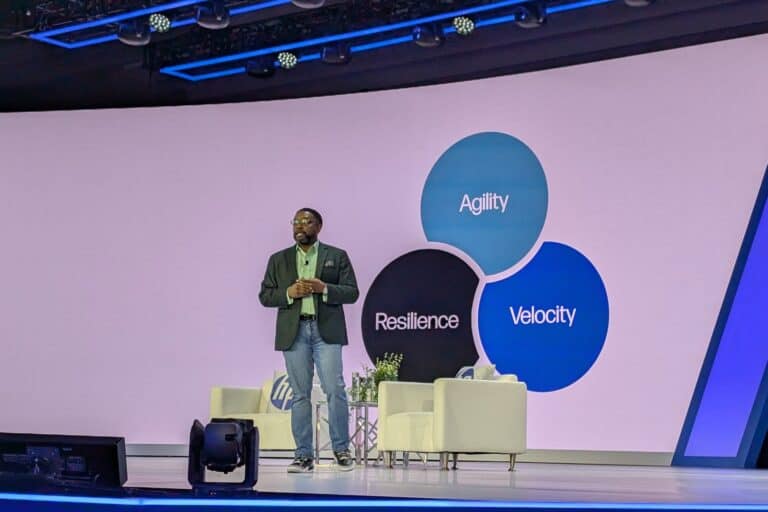HP’s supply chain is ready for (geopolitical) challenges thanks to lessons the company learned during and after the corona pandemic.
During the corona pandemic, HP’s supply chain (and that of virtually all other manufacturers) did not fare so well. The “old-style” supply chain, in which products are made somewhere centrally (usually China), then distributed worldwide, came to a squeaking halt at the time.
HP drew lessons from the problems with its own supply chain and tackled it firmly. That’s what HP CEO Enrique Lores tells us at HP Amplify, the company’s annual partner conference. Today it has a much better diversified supply chain, with much more regional and even local focus. That not only produces a supply chain that can better handle drastic events such as covid. It also makes it easier to cope with geopolitical changes.
Flexible, resilient and fast
HP has made supply chain an obvious priority. It even has a Chief Supply Chain Officer in its ranks with Ernest Nicolas. He took the stage during Amplify to explain what he and HP think a supply chain should look like.
Two key concepts Nicolas mentions are flexibility and resilience. These are characteristics that he believes are indispensable to a modern supply chain. That keeps the company’s products more readily available, even when things happen that are beyond HP’s control. The regional approach Lores mentioned earlier is a crucial part of this.
With the new supply chain setup, HP can not only sell better and faster, it also improves its relationship with partners. After all, that was in a bit of a bad shape, Nicolas admits honestly. He shows some negative reactions from some partners in the channel from the past. These must have hurt. However, this has since been addressed and newer and much more positive comments appear on the screen, from the same partners who were previously very negative.
Ready for what is to come
The message HP wants to pass along to partners and end customers is that the company’s supply chain can handle (sudden) changes in the world. Nicolas specifically cites the import tariffs that President Donald Trump has been sprinkling so lavishly with lately. “By the end of this year, 90 percent of what HP sells in the U.S. will be made outside of China,” he indicates. That means that import tariffs aimed specifically at China will have virtually no impact on HP’s business in the US. He solidifies this sentiment with the following statement: “We are tariff-ready.”
Note that Nicolas is talking specifically about the import tariffs Trump has imposed on products from China. If there are also levies on products from other countries and regions of interest to HP, the company may still be affected. But even then, a distributed approach with lots of regional and local focus (including more local US manufacturing) is better than a centralized one.
So all in all, based on what we hear from Nicolas, it looks good for HP and for the partners who sell most of the company’s products. At the very least HP’s supply chain is in much better shape than it was about 4-5 years ago.
Also read: The US drops tariff threat over global tax agreement
